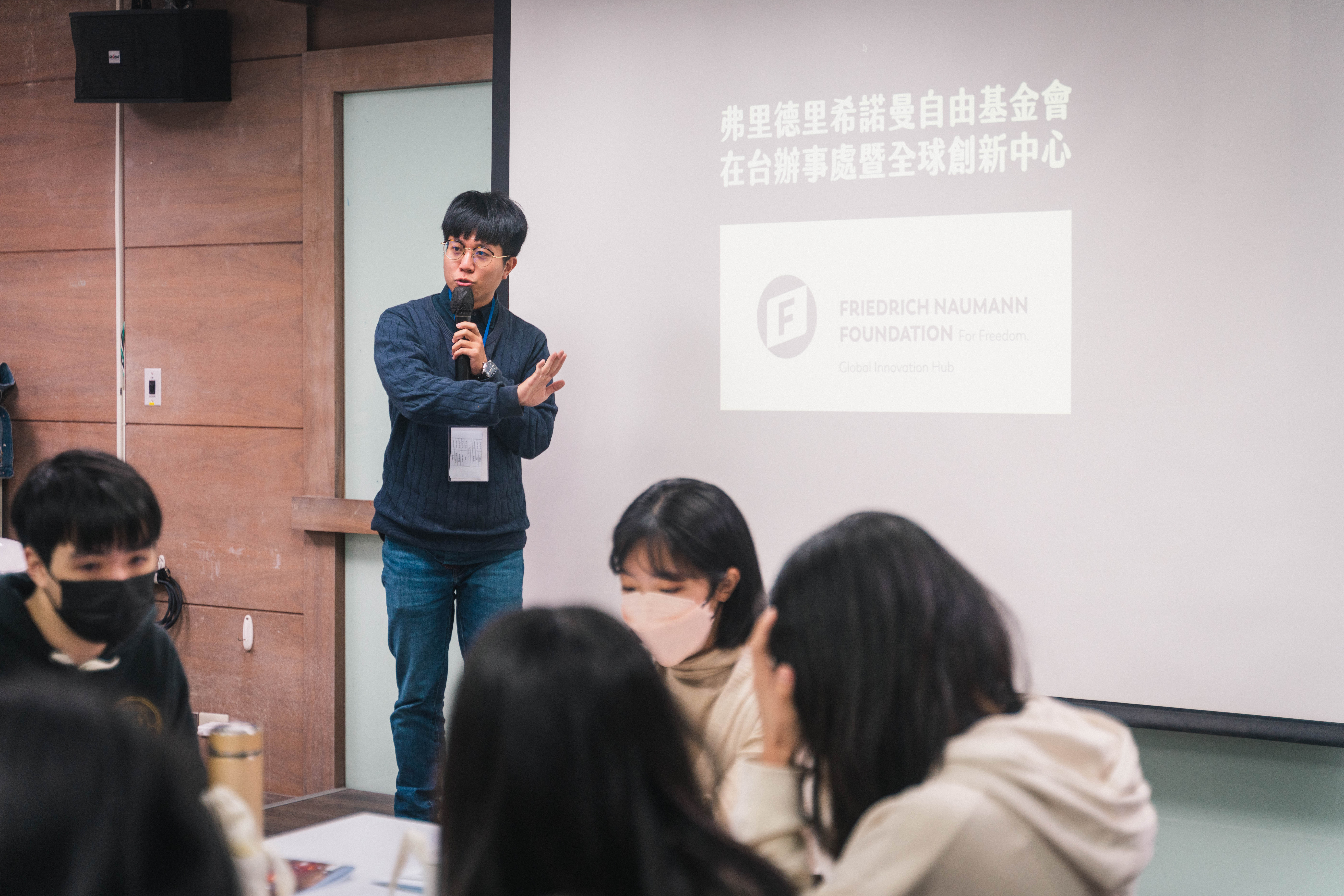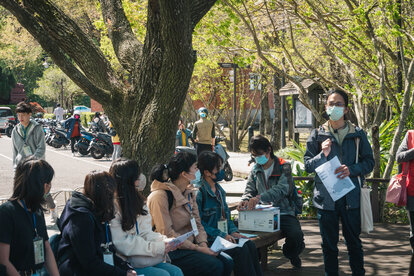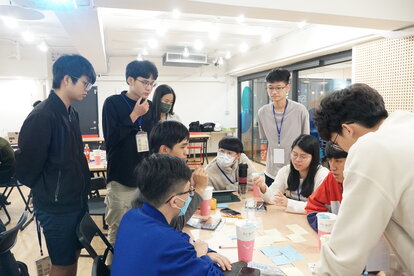Partners
Proposals to Defend Democracy: TYAD’s Youth Empowerment Workshops

Youth play a crucial role in consolidating democracy, but they struggle to make their voices heard. In Taiwan, the voting age is set at 20. This prevents young people from exercising their full rights as citizens. The rise of populism in Taiwan and around the world makes things worse: young people may be lured into such an approach to advocacy because it may quickly enable people to express their demands with a very high volume. However, without deliberation, participation, and democracy education, such an advocacy approach not only brings backlash, but also fosters anti-democratic and discriminatory ideologies or behaviors among young people. It is therefore imperative to ensure that young people understand the value of democracy and that they claim it as their own.
Democracy education is the key to addressing these challenges; therefore, Taiwan Youth Association for Democracy (TYAD) and Friedrich Naumann Foundation for Freedom’s Global Innovation Hub co-organized "The Gap Generations - Youth Activists Empowerment Camp" from February 26 to 28. The camp provided participants with knowledge on transitional justice, migrant workers’ rights, and advocacy skills. It also encouraged participants to develop their action plans to defend democracy. As a follow-up, they held the "Shining Through the Gap-Youth Activists Workshop" in May, which provided participants with a platform for in-depth discussion of their action plans.
What Is the Gap Generations-Youth Activists Empowerment Camp about?

The idea was to bring together young advocates from different fields to share their perspectives and the challenges they faced while advocating for change. The workshop also included a study tour to the Cihu Mausoleum and the SEAMi Bookstore to get a broader perspective and kick-off the deliberations. The Cihu Mausoleum is the burial place for Chiang Kai-shek, who served as the former President of the Republic of China for five terms from 1948-1975. His remains are actually still in the sarcophagus at the mausoleum instead of being buried in the ground. Experienced guides not only led the participants through the site but also helped the participants to immerse themselves in the White Terror period by showing them old newspapers, magazines, and letters from that time. The Cihu Memorial Sculpture Park next to the mausoleum is also home to a large number of Chiang Kai-shek statues that were removed from various locations all over the island and brought here. This spurred some debate as to why so many statues of a political leader who once imposed authoritarian rule on the people still exist today.
At the SEAMi Bookstore, a place where migrant workers can borrow books written in their languages and learn new things, two migrant workers shared their challenges and experiences of working in Taiwan with the group. They also lead the participants to visit the places that migrant workers usually gather for religious and leisure activities, such as churches, shops and restaurants, places around the train station.
Young People’s Proposals
One goal of the workshop was to develop action plans to address the challenges of transitional justice and migrant workers' rights. The participants came up with many proposals and are showcased as follows:
I. Proposals to Improve Migrant Workers’ Rights
The first step was to identify the challenges that migrant workers face when they come to Taiwan to work: excessive amount of recruitment fees charged by brokers, deception by brokers, and poor working conditions. Taiwan’s government has taken some steps to protect this vulnerable group, but overall, the measures leave much to be desired: The dedicated hotline for migrant workers, the 1955 helping line, for example is not very user-friendly for migrant workers.
One suggestion to ameliorate the situation was for the government to holistically improve the employment system for migrant workers by reviewing the current measures to monitor the recruitment and entry process of migrant workers. Furthermore, the government should actively offer more support to migrant workers such as protection and training facilities for migrant workers, language training, cultural exchange activities, and psychological counseling platforms.
Another measure would be to promote the 1955 hotline through social media and offline channels (shops, train stations, transportation facilities, and workplaces), as it is not well known amongst the migrant worker community. The participants proposed to develop an app that integrates functions such as disseminating migrant workers' rights regulations, integrating all necessary information for migrant workers, filing complaints, and discussion forums. For this project, they plan to convince the government to provide them with resources and work with influencers and telecommunication companies to promote their projects.
II. Proposals to Advocate for Transitional Justice
The visit to the Cihu Mausoleum deeply impressed the participants, and spurred conversations about the excessive protection of the remains of Chiang Kai-shek, as well as the need for more comprehensive background information on historical facts of the White Terror Period.
One participant pointed out that the "condemned" during the White Terror period recorded in existing documents did not include all victims and affected individuals, leaving the exact number of "victims" forever shrouded in mystery. This means, that part of the true history of the 228 Incident may have been obscured and will soon be forgotten. Therefore, transitional justice is an urgent and time-sensitive task, as the number of surviving victims is dwindling and even their family members have been struggling for the justice they deserve for many years. In order to stop the forgetting, the participants came up with a number of ideas, such as the “Remembering and Reflecting: The 228 Virtual Reality Exhibition". This exhibition aims to establish VR experience centers in the permanent exhibition area and large venues of 228 memorial museums across the country.
They also suggested changing the name and management approach of the Cihu Mausoleum to reduce the aura of authoritarian veneration, and implementing educational initiatives to promote a critical understanding of history.
Some participants suggested writing academic papers to study how to achieve transitional justice, submitting articles to the media to raise people’s awareness, and working with student organizations or assigning campus ambassadors to advocate for transitional justice on campus. They also plan to organize seminars and lectures on the issues surrounding the Chiang family in their schools. In order to develop better communication strategies for advocating transitional justice, surveys among different age groups would also be needed.
The Follow-up Workshop and Participants’ Proposals

To continue the discussions initiated during the Empowerment Camp, the "Shining Through the Gap-Youth Activists Workshop" was held in May. With a focus on transitional justice, this workshop aimed to guide young activists on how to develop an advocacy action plan. The workshop resulted in these three proposals:
I. The Dawn after Storm: Lessons from the White Terror and Transitional Justice
Students are likely to be more receptive to different ideas than those who have already left school; therefore, promoting transitional justice on high school campuses through lectures and courses would be a good idea. Renowned transitional justice scholars should be invited to give these lectures and to introduce the topic by presenting key cases, absurd verdicts, and local stories. This would also be helpful to develop student’s critical thinking skills.
II. Training for Teachers: The Forgotten Names
There is currently little training for teachers on how to approach the subject of transitional justice in the classrooms and in campus live. Therefore, courses on transitional justice should be included in teacher training programs, including experiential activities and visits to sites of injustice. To achieve this, participants suggested collaborating with institutions such as Taiwan's National Human Rights Museum and the 228 Memorial Museum, for they could play a pivotal role in training the teachers to become a bridge between students, families, and the wider community to raise their awareness.
III. On the Journey to Fulfill Transitional Justice, Where Are We Now?
Transitional Justice as a concept is still quite unknown by many people in the society. That is despite the fact, that the period of the White Terror is not far from us. To raise the awareness, local cases of white terror around the campus should be remembered and highlighted to bridge the gap between history and students' daily lives. High school and vocational school teachers, as well as White Terror victims could cooperate to organize transitional justice-related exhibitions on campuses. A message walls next to the exhibitions could be set to allow students to share their thoughts and feelings. To students who want to join the advocacy, this group will offer them a set of educational and promotional materials such as presentation and poster templates on promoting transitional justice as a resource to support them.
Impact of The Workshops
Overall, the feedback from the participants shows that both workshops are impactful: the participants enjoyed the interactive design of both workshops, particularly the action plan discussion sessions, the field visits, and the diverse background of speakers who are actually also advocates. On a scale of 1 to 5, satisfaction with the second workshop was generally in the 4 to 5 range. At a time when populism is on the rise and democracy is under threat, we felt that both workshops served as an important platform to provide democracy education and sustain a network of young democracy advocates.
* The article was written by Marco Tsai, Project Planner at the Taiwan Youth Association for Democracy
